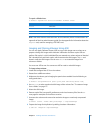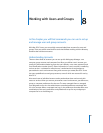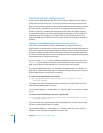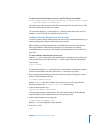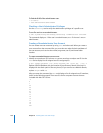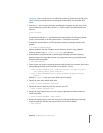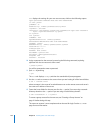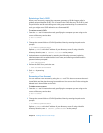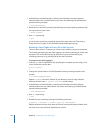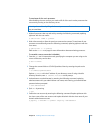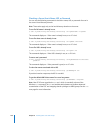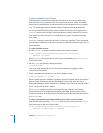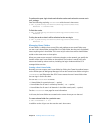
Chapter 8 Working with Users and Groups 103
Retreiving a User’s GUID
When a user account is created, the computer generates a 128-bit integer called a
globally unique identifier (GUID). This is stored in the LDAP directory. The GUID is used
for permissions and for associating users with group memberships. In command-line
tools, you might see a GUID referred to as a GeneratedUID.
To retrieve a user’s GUID:
1 Start the dscl tool in interactive mode, specifying the computer you are using as the
source of directory service data:
$ dscl localhost
>
2 Change the current folder to /LDAPv3/ipaddress/Users by entering the path at the
prompt:
> cd /LDAPv3/
ipaddress
/Users
Replace
ipaddress
with the IP address of your directory server. If using a NetInfo
directory domain, enter cd /NetInfo/root/Users at the prompt.
3 Authenticate as an administrator by entering the following command, replacing
adminusername with an administrator’s user name, and entering an administrator’s
password when prompted:
> auth
adminusername
4 Review the GUID for a particular user.
> read
username
GeneratedUID
5 Quit dscl by entering:
> quit
Removing a User Account
You can remove a user account by using the dscl tool. This does not remove the user’s
home folder and the data that may be stored there. You can use the Finder to drag the
deleted user’s home folder to the Trash.
To delete a user account:
1 Start the dscl tool in interactive mode, specifying the computer you are using as the
source of directory service data:
$ dscl localhost
>
2 Change the current folder to /LDAPv3/ipaddress/Users by entering the path at the
prompt:
> cd /LDAPv3/
ipaddress
/Users
Replace
ipaddress
with the IP address of your directory server. If using a NetInfo
directory domain, enter
cd /NetInfo/
ipaddress
/Users at the prompt.



